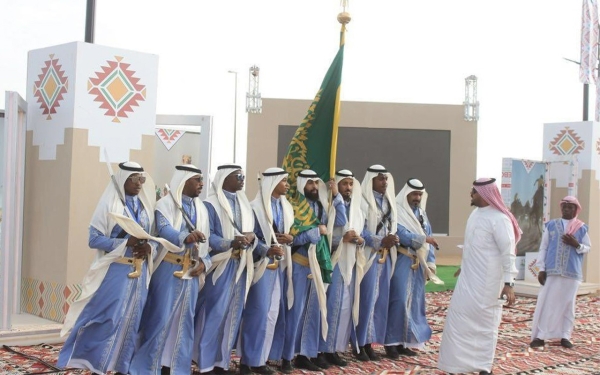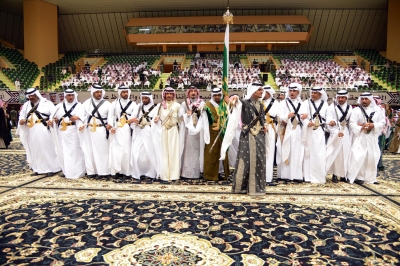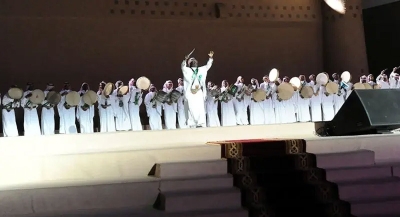
Saudi Ardah Melodies are a melodic structure used by poets of the Saudi Ardah in composing the melody and Maqams (musical modes) for the Ardah poem. This melody does not exceed the tetrachord, similar to other traditional popular songs worldwide characterized by simplicity and the absence of melodic instruments. The performance relies solely on beating drums, which provide resonance and grandeur to the sound of Ardah.
Characteristics of Saudi Ardah melodies
In the Saudi Ardah, the melody typically stays within the fourth note of the Maqam used for the performance. Occasionally, it descends below the nucleus by one or two notes. When the Maqam is 'Sikah,' the most common scale for Ardah melodies, the melody does not surpass the fourth note of Husayni note, and may descend to the Rast or Dukah note.
The limited melodic range in Saudi Ardah is attributed to its complete reliance on the chanting recitation style. This style is similar to that used in composing national epics, strong sections in classical musical compositions, and choral patterns such as opera and operetta. The aim is to create the desired impression of strength in the performance. Given that Ardah is a war dance, its performance involves strong dramatic recitation with minimal ornamentation. Consequently, the melodic line is confined to the fourth vocal degree of the used maqam, distancing itself from the gentle style characterized by ornamentation in Arabic music.
Role of Ardah poet in performing the melody
The musical sensitivity of the Ardah poet plays a prominent role in the success of Saudi Ardah melodies. Only standardized, academically mastered methods are used in their correct usage contexts. This musical style in the melody corresponds with the poetic purposes of 'Hamasah' (enthusiasm), emphasizing the importance of the Ardah poet's musical sensibilities, which also manifest in the rhythmic aspect of Saudi Ardah.
Basic melody in Saudi Ardah
The basic melody upon which the first line of the first verse of the poem 'Sadr' is built continues throughout the poem. Due to the minimal element of ornamentation and the limited melodic range, the folk artist does not use any melodic instruments, limiting the performance to drumming, which provides resonance and majesty. Thus, the melodic construction of the poem in Ardah relies on the musical quantity of the poets, particularly the poet who recites the poem in a loud voice. Accordingly, this 'musicality' determines the tone, its vocal degree, melodic path, and basic maqam.
Saudi Ardah
Ardah is a cultural dance heritage performed to demonstrate strength and courage and inspire enthusiasm in souls. It is performed on national and special occasions, and its name is derived from the word Ard, meaning the great army. Saudi Ardah was present in the unification epic of the Kingdom of Saudi Arabia, led by the Founding King Abdulaziz Bin Abdulrahman Al Saud, who was keen on performing it before launching the unification operations. It later became a cultural symbol of pride. Therefore, kings of the Kingdom are keen to perform it, and it is used to receive the country’s most important guests, including heads of state, etc.
Participants in Saudi Ardah are divided into two groups: The first consists of war poem reciters and the second consists of drum bearers. The flag bearer stands between the two groups. The reciters begin performing and repeating the verses, followed by the performance with drum beats, leading to the raising of swords.
In 2015, Saudi Ardah was inscribed on the United Nations Educational, Scientific, and Cultural Organization (UNESCO) Representative List of the (oral) Intangible Cultural Heritage of Humanity. The National Center for Saudi Ardah was established in 2017 by the King Abdulaziz Foundation for Research and Archives (Darah) to enhance the national culture and identity and to serve as a home for the folk arts specific to Ardah in the Kingdom.
Related quizzes
Related articles


